| Weight | 232 g |
|---|---|
| Dimensions | 70 mm |
| Focal Length (mm) | |
| Max Aperture (f) | |
| Min Aperture (f) | |
| Aperture Blades | |
| Elements | |
| Sharp (Near) | |
| Sharp (Far) | |
| Rear Mount | |
| Flange-Focal Distance (mm @ ∞) | |
| RF/L Extension (mm) | |
| Serial Numbers | |
| Production |
Agfa Color-Solagon DI 70/4.5
Premier six-element ‘C-Series’ lens fitted to various industrial Agfa imaging devices, including enlargers. Probably rare earth glass. Perhaps made by/with Steinheil.









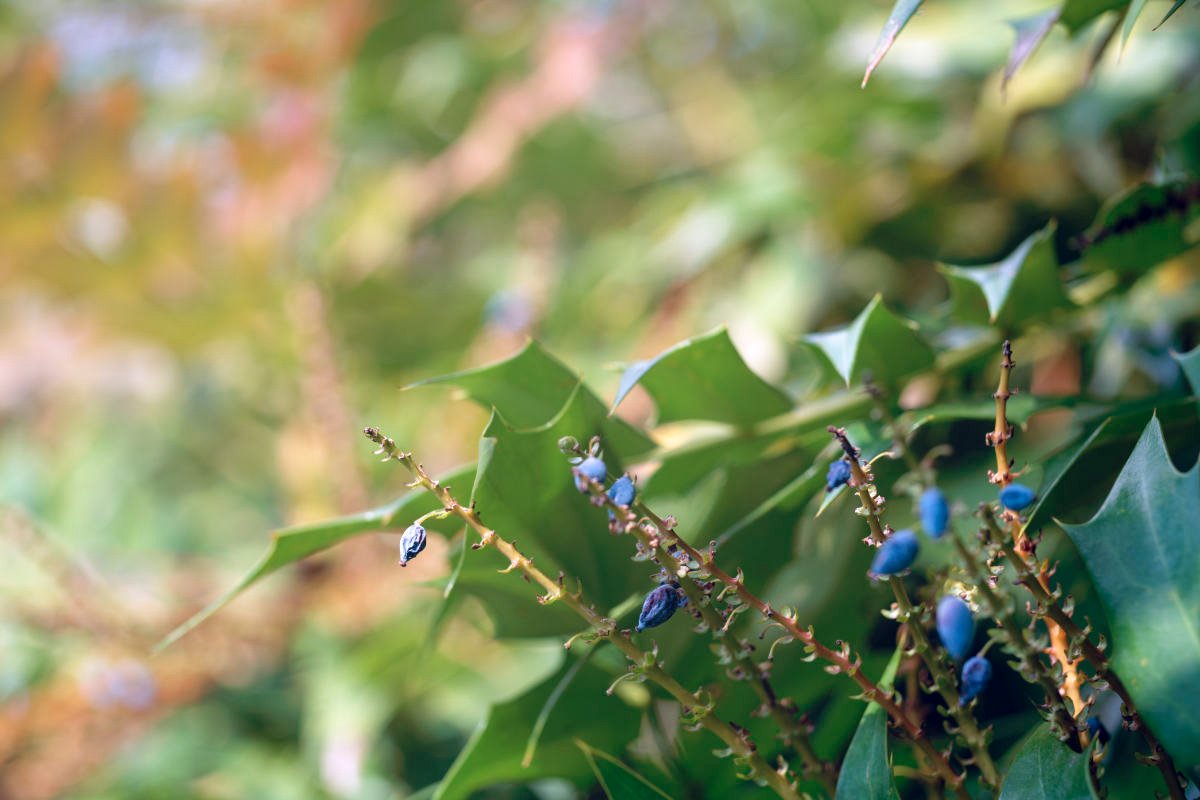
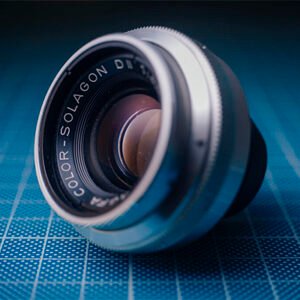
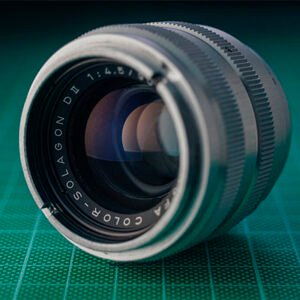
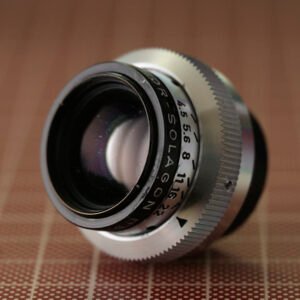




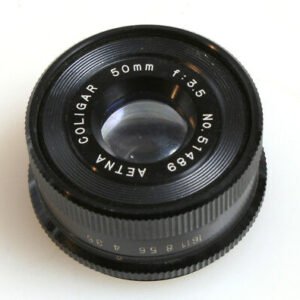


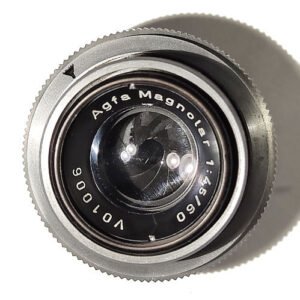
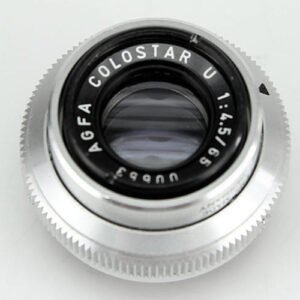
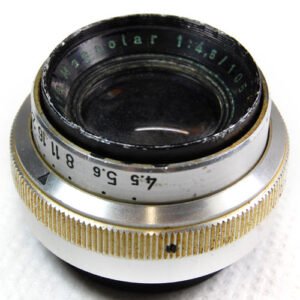

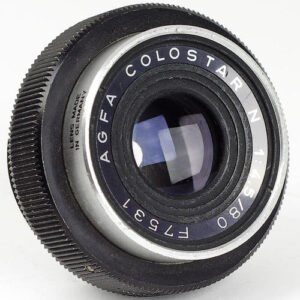


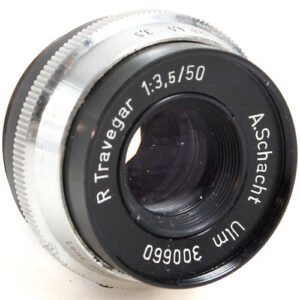
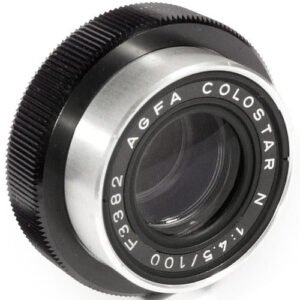
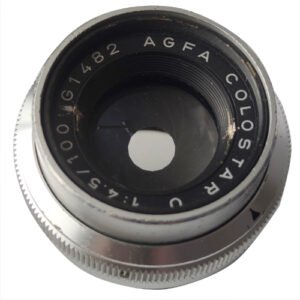
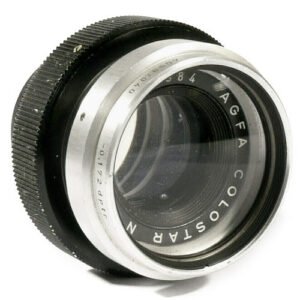
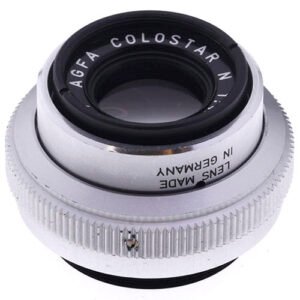


16:9 –
The Color-Solagon DI 70/4.5 is a giant little lens that shocks in every department: much heavier than it looks; much sharper than a sixty-year old lens has a right to be; and much too cheap. Getting mechanical issues out the way: unlike its siblings, the DI 70/4.5 has a 42×0.5mm thread inconvenient for direct adaptation. One solution is to 3D print a step ring to a 56mm > M42 helical. However, the 38.5mm diameter rear barrel protrudes 17mm, 9mm of which is thread. An M39 > M42 step ring fits rather neatly onto the smooth barrel with plenty of contact area on two planes for adhesive. Test images for this review were shot with a jerry-rigged blu-tacked step-ring, and still recorded Gold-awarded resolution – another ‘shouldn’t be happening’ moment. Please note that the FFD recorded below is measured from the flange at the front end of the 9mm thread. A typical extension for this lens with an adaptor mounted as described above would actually be 49-50mm.
The beauty of these Color-Solagon enlarger lenses is that – even if you know the name from the highly-regarded Double-Gauss taking lenses of the 1950s – you approach these without expectations: they have no reputation; they don’t show up on eBay or dealer lists very often and you rarely read about them on forums. They are unheralded. Which may soon change – because, boy, does this lens deserve heralding. Near-field sharpness averaged from f5.6-f8 is 90.1% – very similar to the Schneider Apo-Componon HM 90/4.5. If we credit the f4.5 as f4 and look at the more demanding f4-f8 average, we still see a figure of 89.3% – ie, it’s very sharp wide open. Out of 120 lenses tested so far, only one in the 70-90mm focal length range bests it by this metric: the table-topping Meogon-S 80, which enjoys the advantage of an extra stop. At every point in the frame, and at every aperture, this is an extremely sharp lens.
Like all very well corrected optics, this Plasmat doesn’t wilt drastically at distance, scoring 88% for its f5.6-f8 average. It’s not only Agfa’s best enlarger lens, it’s one of the sharpest enlarger lenses I’ve seen, fully competitive with Apo-Rodagon/Componons, Fuji EX et al.
All the technical metrics are on point: there’s barely any CA or geometric distortion and the good news doesn’t end there: although the missing filter thread will test your hood-fitting ingenuity, the multicoating keeps flare to a manageable level and colours are deep and rich. Although the DI 70 was probably made for a mini-lab, the images it makes feel more like they are tuned for poetic expression: there’s a slightly warm cast, and the wonderful 16-blade circular aperture gives graceful transitions from the razor-sharp plane of focus into bokeh as molten and painterly as f4.5 will allow a 70mm lens to have. Truly great lenses have an ineffable quality deriving from their technical excellence, but somehow add up to something more. Images have a certain texture or atmosphere that’s hard to define, but you know when you’re in its presence – the best Leica glass has it; certain Pentax optics; one or two Zeiss models. Against all expectations, this one has it, too.
It’s hard to confirm whether Agfa or Steinheil made the Plasmat Color-Solagons, but the casing and tooling resembles Steinheil production of this period, which is no bad thing: it was built to last, but not built to last forever. Most samples we’ve seen have fungus or haze issues, or slipping aperture rings. If you see one, rescue it. Whatever repair they need is 100% worth doing and there aren’t many about.